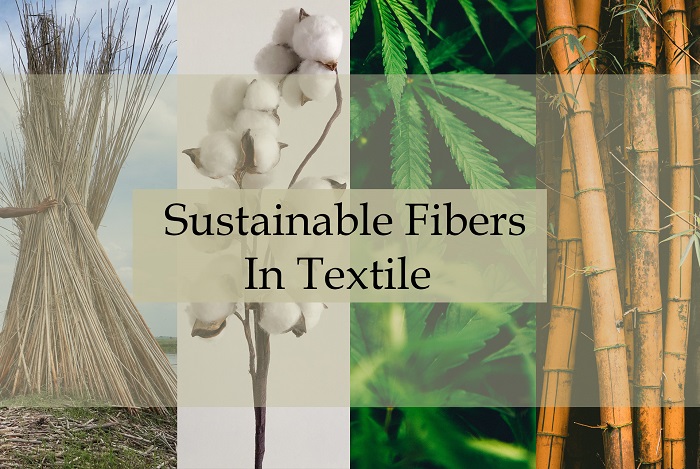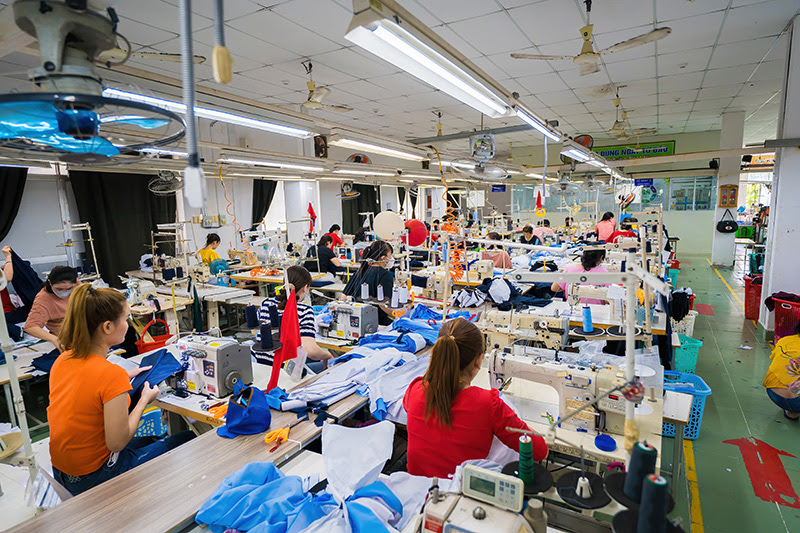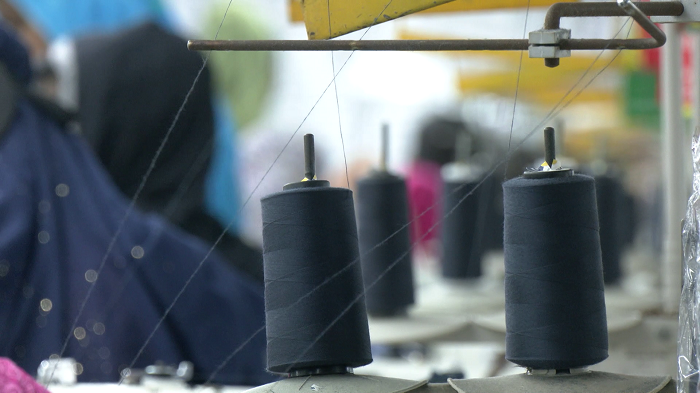In FY2023-24, India exported wool products worth $1.74 billion with exports of its woolen ready-made garments, carpets, yarn and fabrics amounting to $1.45 billion from April-January 2023-24.
Of these, the share of wool carpets exports was the highest with 80 per cent. In FY24, India exported wool carpets worth $1.34 billion during the year while it exported woolen yarn and fabrics worth $192 million. RMG products worth $202 million were also exported by India in FY24.
India exports its wool fabrics, hand-made carpets and ready-made garments to the US, the UK, Italy, Germany, Australia, UAE, Netherland, Sweden, France, Japan, etc. One of the major importers of wool products from India in 2023-24 was the US which imported products worth $853 million during the year. This was followed by the UK and Germany with imports worth $123 million and $96 million. India also exported wool products worth $86 million to the Italy, $57 million to Australia and $45 million to the UAE during the financial year.
India exported its wool fabrics to Italy, the UK, Korea, Japan, and the US during 2023-24. Italy emerged the major importer of woolen fabrics from India during the year with a share of 25.5 per cent of total exports.
Majority of India’s woolen carpets are exported to the US. In 2023-24, the country exported carpets worth $803 million to the US, with its share constituting 59 per cent of total. India mainly exports woolen ready-made garments to the US, the UK, UAE, Oman, Germany, France, Hong Kong, and Afghanistan. Combined together, these countries accounted for 75 per cent of the total woolen garments’ exports from India during 2023-24.
To improve India’s competitiveness in the wool industry and the quality of its wool products, the Ministry of Textiles allocated Rs 126 crore under the Integrated Wool Development Program (IWDP) scheme during a five-year plan period (i.e. 2021-22 to 2025-26). This scheme aims to harmonise the wool supply chain, link the wool industry and producers, and provide a marketing platform to the smaller woollen products manufacturers in India. Through this scheme, the Ministry of Textiles aims to improve the quality of woolen products by increasing wool testing, improve the tools available for manufacturing and providing skill development and capacity building capabilities to hand-made manufacturers.
China National Textile and Apparel Council (CNTAC) has signed an MoU with Pakistan’s Board of Investment (BOI) to develop textile parks in Pakistan.
As per a report by China Economic Net, the MoU was signed at the 2024 China Textile Conference in Keqiao, Shaoxing. Titled, ‘How to take science and technology, fashion and green; as a guide to boost productivity and shape the industry’s future, the report offers a robust framework to develop these textile parks to enhance bilateral trade, foster technology transfer and enhance capacity
Focusing on four core topics ‘Innovation Environment, Materials, Artificial Intelligence, and Production Processes, the Shaoxing conference discussed leading innovative industry trends to promote, transform and optimise the global textile chain.
A backbone of Pakistan’s economy, textile industry is a major contributor to its exports. Being the second largest supplier of cotton cloth and fifth largest cotton exporter, Pakistan offers unmatched potential for this collaboration.
Its strategic location alongwith a skilled workforce and vertical integration positions Pakistan as an ideal partner to these Chinese enterprises, states Khalil Hashmi, Pakistan’s Ambassador to China.
As against a 2.68 per cent growth in India’s apparel exports to the country, Bangladesh’s apparel exports to the US grew by 11.76 per cent during the July-November’24-25 period as against the corresponding period of the previous fiscal year. Meanwhile, Vietnam’s apparel exports to the US grew by 3.98 per cent during period.
Data from the Export Promotion Bureau (EPB) shows, during the period, Bangladesh exported apparel products worth $19.9 billion, of which RMG exports constituted 80.97 per cent.
Bangladesh's share of apparel exports to the US market decreased by 3.33 per cent Y-o-Y during the January-October’24-25 period while China’s decreased by 1.06 per cent.
Bangladesh's RMG exports have been growing with the country becoming the second-largest RMG exporter in the world. In the July 2023-May 2026, Bangladesh’s RMG exports increased by 2.86 per cent to $43.85 billion.
Sri Lanka’s Joint Apparel Association Forum (JAAF) has partnered with global civil society organisation, Solidaridad to help local companies align with the European Union's supply chain rules on human rights and sustainability.
As a part of this initiative, JAAF organised a workshop to address the EU’s Corporate Sustainability Due Diligence Directive (CSDDD). The event provided local businesses with insights into risk assessment, sustainability metrics, and due diligence reporting to meet the stringent requirements of the directive.
This collaboration helps Sri Lanka’s apparel industries adapt to evolving global trade norms, says Yohan Lawrence, Secretary General.
Introduced in 2023, the CSDDD mandates companies within EU-bound supply chains to adhere to high environmental and human rights standards. While Sri Lanka’s suppliers are not directly obligated to comply, aligning with these regulations helps them remain competitive in the EU market, which accounts for 30 per cent of the country's apparel exports.
Around 80 per cent of Sri Lanka’s apparel exports to the EU are targeted to countries such as Italy, Germany, the Netherlands, and France, which makes compliance a strategic necessity. The workshop also resulting in the signing of an agreement between JAAF and Solidaridad to formalise their partnership to help Sri Lanka’s suppliers meet CSDDD standards.
The event was attended by notable dignitaries, including Lars Bredal, Deputy Head, Delegation for the EU to Sri Lanka and the Maldives, and Iwan Rutjens, Deputy Head, Mission for the Kingdom of the Netherlands.
JAAF hailed Shahid Sangani, Secretary, Free Trade Zone and Apparel Manufacturers' Association (FAAMA), for his behind-the-scenes contributions to the program.
Sri Lanka’s Joint Apparel Association Forum (JAAF) has partnered with global civil society organisation, Solidaridad to help local companies align with the European Union's supply chain rules on human rights and sustainability.
As a part of this initiative, JAAF organised a workshop to address the EU’s Corporate Sustainability Due Diligence Directive (CSDDD). The event provided local businesses with insights into risk assessment, sustainability metrics, and due diligence reporting to meet the stringent requirements of the directive.
This collaboration helps Sri Lanka’s apparel industries adapt to evolving global trade norms, says Yohan Lawrence, Secretary General.
Introduced in 2023, the CSDDD mandates companies within EU-bound supply chains to adhere to high environmental and human rights standards. While Sri Lanka’s suppliers are not directly obligated to comply, aligning with these regulations helps them remain competitive in the EU market, which accounts for 30 per cent of the country's apparel exports.
Around 80 per cent of Sri Lanka’s apparel exports to the EU are targeted to countries such as Italy, Germany, the Netherlands, and France, which makes compliance a strategic necessity. The workshop also resulting in the signing of an agreement between JAAF and Solidaridad to formalise their partnership to help Sri Lanka’s suppliers meet CSDDD standards.
The event was attended by notable dignitaries, including Lars Bredal, Deputy Head, Delegation for the EU to Sri Lanka and the Maldives, and Iwan Rutjens, Deputy Head, Mission for the Kingdom of the Netherlands.
JAAF hailed Shahid Sangani, Secretary, Free Trade Zone and Apparel Manufacturers' Association (FAAMA), for his behind-the-scenes contributions to the program.
On December 6, 2024, Polish textile industry representatives adopted the Warsaw Declaration, committing to strengthen the sector's competitiveness amid global challenges. The agreement emerged from a two-day meeting in Warsaw under the EU-funded StitchTogether project, which promotes social partnerships in the European textiles and clothing industry.
Poland’s textiles sector, employing 130,000 workers across 20,000 mostly small and medium enterprises, faces mounting pressures from global competition and price volatility. The Warsaw Declaration sets out priorities to navigate the industry’s digital and green transitions while ensuring resilience, decent jobs, and sustainability.
Key stakeholders, including employer associations, trade unions, education institutions, and government representatives, called for upgraded industrial strategies to attract a skilled workforce and sustain the sector.
Judith Kirton-Darling, General Secretary of IndustriAll Europe, stressed the importance of collaboration during periods of transition. She highlighted that social dialogue is essential for managing change, particularly as the textile industry shifts toward sustainability. Kirton-Darling emphasized that this transition must protect existing jobs while also creating new, decent employment opportunities. She called for a Just Transition, underpinned by a sectoral industrial policy, to ensure no worker is left behind.
Dirk Vantyghem, Director General of Euratex, emphasized the strategic opportunity presented by Poland’s upcoming EU presidency. He called for action on energy costs and fair competition, noting that Polish companies are seeking practical solutions rather than additional regulations to enhance their competitiveness.
The meeting reinforced a collective vision for Poland’s textiles industry, leveraging its rich heritage to adapt and thrive in a sustainable future. Stakeholders now call on the Polish government to support their roadmap for innovation and resilience.
The online invitation system for Garment Tech Istanbul 2025, Turkey’s premier exhibition for garment and ready-to-wear technologies, is now live, drawing global attention. The event, set to take place from June 25-28, 2025, at the Istanbul Expo Center, will showcase cutting-edge garment machinery, embroidery equipment, spare parts, and sub-industry innovations.
Professional visitors from over 10 countries, including the UK, India, Australia, Pakistan, Egypt, and China, have already secured their spots through the system. This overwhelming response underscores the exhibition’s growing global significance as a hub for industry innovation.
Garment Tech Istanbul 2025 will bring together leading domestic and international brands, investors, and professionals, creating a unique platform to explore the latest technologies and trends shaping the garment industry. By registering through the online invitation system, visitors can avoid long queues and gain expedited entry. After completing the form, e-invitations are sent via email, enabling visitors to print badges directly at the venue.
Promotional efforts are also in full swing. A newly launched bilingual promotional video, titled Innovative Touch to Fashion, highlights the exhibition’s pivotal role in the industry. Released across the official website and social media channels, the video has received high praise from industry professionals worldwide.
With its comprehensive scope and international participation, Garment Tech Istanbul 2025 is poised to strengthen its reputation as Turkey's most prominent platform for garment technology innovation.
Launched three years ago with €1 million in funding, the ‘Growing Benin's Organic Cotton Sector’ initiative has significantly improved livelihoods for nearly 9,000 small-scale farmers. Spearheaded by OBEPAB with support from BMZ, GIZ, PAN UK, Paul Reinhart AG, and the Aid by Trade Foundation (AbTF), the project enabled farmers to transition to organic cotton cultivation under the Cotton made in Africa Organic (CmiA Organic) standard.
Farmers saw a 9 per cent average increase in profitability and a 65 per cent rise in organic cotton production. The initiative also empowered women, with leadership roles among cooperative committees increasing by 30 per cent. Knowledge-sharing on sustainable farming, including organic pest management and seed selection, was a cornerstone of the program.
“Supporting cotton farmers in transitioning to organic cultivation while improving market access has been central to our mission,” said Alexandra Perschau of AbTF. The project connected farmers to global markets, with demand for CmiA and CmiA Organic cotton surging. Bestseller, a major retailer, recently purchased record volumes of African CmiA Organic cotton.
As part of GIZ’s Agri Chains program, the project aligns with broader goals of fostering green, fair, and inclusive supply chains. “This collaboration strengthens the resilience of cotton-growing communities and connects them to global markets,” noted Benjamin Mohr of GIZ.
With momentum building, the project is entering a second phase to further scale organic cotton production in Benin, a nation gaining recognition for high-quality organic textiles. “Benin is poised to become a key destination for organic cotton procurement and processing,” affirmed Alessandra Fiedler of GIZ.
This success story underscores the potential of sustainable agriculture to transform lives while protecting the environment.
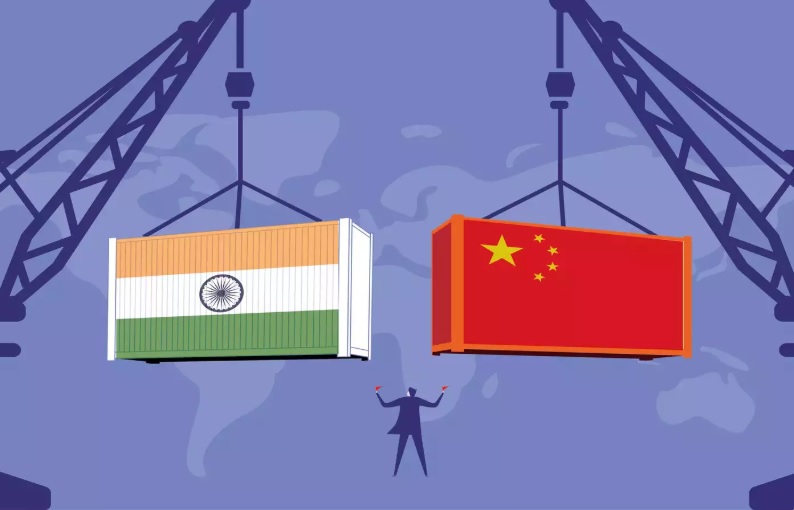
The US fashion industry is grappling with the need to diversify its sourcing, but moving away from China is a challenge. India emerges as a potential contender, boasting a robust and self-sufficient supply chain.
Is China dependence a burden?
The US fashion industry's dependence on China for apparel sourcing is facing a lot of scrutiny due to tariff concerns, forced labor allegations, and geopolitical risks. While there's a growing desire to diversify sourcing destinations, a recent report by Sheng Lu, professor of fashion and apparel studies at the University of Delaware, reveals that shifting away from China is easier said than done. Lu's findings, presented at the United States Fashion Industry Association's Apparel Importers Trade & Transportation Conference, highlight China's dominance in the US apparel import market.
Table: US fashion sourcing
|
Rank |
Country |
Market Share (Jan-Oct 2024) |
Number of SKUs |
|
1 |
China |
61% |
62,000 |
|
2 |
India |
12% |
15,000 |
|
3 |
Vietnam |
12% |
15,000 |
|
4 |
Cambodia |
3% |
3,500 |
|
5 |
Bangladesh |
2% |
<3,000 |
Source: Sheng Lu, University of Delaware
"The problem is that finding a sourcing locale that can offer the same breadth of products as China remains a lift so heavy that it's proven nearly impossible to budge," Lu stated. "Buying from China isn't so much about price anymore but capabilities." While alternate sourcing destinations like India and Vietnam have increased their apparel exports to the US, they still fall short of China's product range and complexity. For example, ‘Asia 5’ countries viz. Bangladesh, Cambodia, India, Indonesia, and Vietnam together can only fulfill 71 per cent of the tops and 47 per cent of dresses that China supplies to the US market.
India emerging a strong contender
India, with its comprehensive and largely self-sufficient textile and apparel supply chain, has the potential to become a significant sourcing hub for US fashion brands. The industry is vertically integrated, from cotton farming to garment manufacturing, offering a competitive advantage. "India's strength lies in its ability to offer a wide range of products across different price points, from value to luxury segments," says Avinash Mane, a textile industry analyst based in Mumbai. India has also made significant progress in improving its infrastructure and logistics capabilities, making it a more attractive sourcing destination.
Shahi Exports, India's largest garment exporter for example. It has been successfully catering to international brands like Gap, H&M, and Zara. The company's vertically integrated operations and focus on sustainability have enabled it to compete effectively in the global market. "We have invested heavily in building a sustainable and ethical supply chain," says Anant Ahuja, CEO, Shahi Exports. "This has helped us attract international buyers who are increasingly conscious of social and environmental responsibility."
However, despite its potential, India faces numerous issues in its bid to become a major sourcing hub for US fashion. Bureaucratic hurdles, infrastructure bottlenecks, and the need for further skill development in the workforce are some major issues. However, the government is actively promoting the textile and apparel industry through initiatives like the Production Linked Incentive (PLI) scheme, which aims to boost domestic manufacturing and exports. "The PLI scheme is a game-changer for the Indian textile industry," says Rahul Mehta, Chief Mentor of the Clothing Manufacturers Association of India (CMAI). "It will incentivize investments in technology and capacity building, making Indian companies more competitive globally."
The sustainability imperative
While China dominates traditional apparel manufacturing, Lu's research highlights an area where it lags: sustainable products made with recycled textiles. Italy currently leads this category, followed by the US, with China trailing behind.
This is an opportunity for India and it can capitalize on the growing demand for sustainable fashion. By investing in textile-to-textile recycling technologies and promoting eco-friendly practices, India can position itself as a preferred sourcing destination for environmentally conscious brands. "If you cannot compete with China for traditional products, turn the table; really compete on sustainability," Lu advises.
The moot point is as the US fashion industry seeks to reduce its reliance on China, India emerges a strong contender to fill the gap. With its comprehensive supply chain, competitive labor costs, and growing focus on sustainability, India has the potential to become a key sourcing hub for US fashion brands. While challenges remain, the country's proactive government policies and industry initiatives are paving the way for a more prominent role in the global fashion landscape.
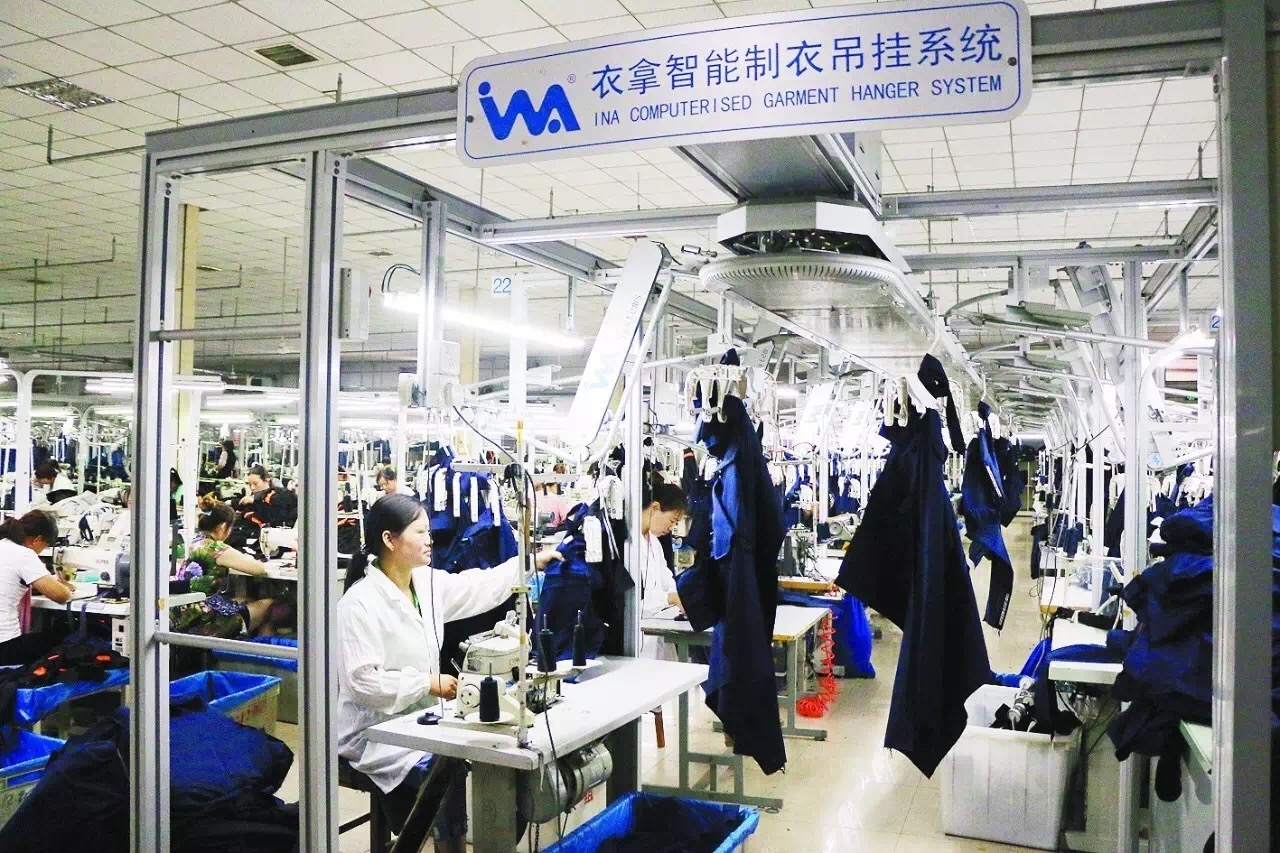
As the second China International Supply Chain Expo (CISCE) unfolds in Beijing, the spotlight is on China's textile and apparel sector, a critical pillar of the nation's robust supply chain network and a major contributor to the global economy. The country has consolidated its position as a dominant textile and apparel industry player, with the world's largest production capacity and export volume. This success is due to several reasons like scale, technological advancements, a supporting ecosystem among others.
The way to success
China's leads the world in textiles sector with over 40 per cent of the world's 500 major industrial products, holding the top spot in global manufacturing for 14 consecutive years. This massive scale translates into competitive pricing and a vast array of product offerings. What works for them is that they have built a comprehensive supporting ecosystem for the textile industry that covers raw material production, textile machinery manufacturing, and efficient logistics networks. This integrated approach streamlines production processes and enhances overall efficiency.
What’s more, the industry is increasingly embracing automation and advanced manufacturing technologies to improve productivity and product quality. Investments in research and development are driving innovation in areas like sustainable textile production and smart manufacturing.
Table: Overview of China’s textile and apparel market
|
Metric |
Value |
Source |
|
Global textile and apparel market share |
31.6% (2023) |
Sheng Lu Fashion |
|
Total value of textile and apparel exports |
$164 billion (2023) |
Sheng Lu Fashion |
|
Domestic consumption of textile and apparel production |
70-80% |
Sheng Lu Fashion |
|
Number of R&D projects in the textile and apparel sector |
Over 10,000 (2022) |
Statista |
Despite facing challenges such as rising labor costs and increasing global competition, China's textile and apparel sector has been resilient. The industry is actively pursuing strategies to maintain its competitive edge by shifting focus to higher-value products. It’s moving away from basic garments, and manufacturers are focusing on producing higher-value items like functional apparel and fashion-forward designs. With growing consumer demand for eco-friendly products, the industry is investing in sustainable practices, such as using recycled materials and reducing water and energy consumption. The focus is also on brand building. Chinese textile and apparel companies are actively developing their own brands to enhance their global recognition and capture a larger share of the value chain.
China's commitment to further integrating its textile and apparel sector into the global supply chain is evident. The CISCE serves as a platform to showcase the industry's strengths, foster international collaborations, and explore new opportunities for growth. As the world becomes increasingly interconnected, China's textile and apparel sector is poised to remain a vital thread in the fabric of the global economy.
- 1
- 2
- 3
- 4
- 5
- 6
- 7
- 8
- 9
- 10
Peeling Back the Fabric: Glimpact study gives true ecological threads of apparel…
A groundbreaking new study by Glimpact, has pulled back the curtain on the often-obscured environmental footprint of the apparel industry,... Read more
Embracing Innovation: The rise of sustainable fibers in a changing world
The quest for sustainable and high-performance alternatives to traditional resources has sparked a revolution in fiber use. According to the... Read more
Garment Tech Istanbul to showcase cutting-edge apparel technology and drive glob…
A global hub for apparel innovation Istanbul will welcome leading global players in garment, embroidery, and textile machinery from June 25... Read more
From discarded threads to global trends, Panipat's recycled yarn revolution
Panipat, a city synonymous with textiles, is rapidly evolving from a traditional weaving hub to a powerhouse of sustainable yarn... Read more
Bangladesh emerges strong in global RMG exports as China's loses ground
Bangladesh is rapidly strengthening its position as a major player in the global apparel export market, capitalizing on a shift... Read more
Blossom Premiere Vision returns in June to support luxury fashion's shifting nee…
As the global luxury goods market grapples with a prolonged slowdown, an industry once resilient to crises is now undergoing... Read more
Monforts technologies power sustainability showcase at Kingpins Amsterdam
Denim mills using Monforts systems dominate eco-focused fabric displays At the recent Kingpins Amsterdam exhibition held on April 16-17 at the... Read more
Bangladesh RMG exports navigate new skies amid cost concerns post India's trans-…
Bangladesh's RMG export is adapting to India's revocation of trans-shipment services, marked by maiden freighter flight carrying 60 metric tons... Read more
A stitch in time, fashion's 1% solution to a carbon crisis
The fashion industry, built on trends and textiles, is facing a stark reality: its environmental footprint is unsustainable. Hidden deep... Read more
Threadbare Foundations: Bangladesh’s RMG boom hangs by Indian yarns
Bangladesh’s ready-made garment (RMG) industry is a global juggernaut. Second only to China in apparel exports, the sector is the... Read more


